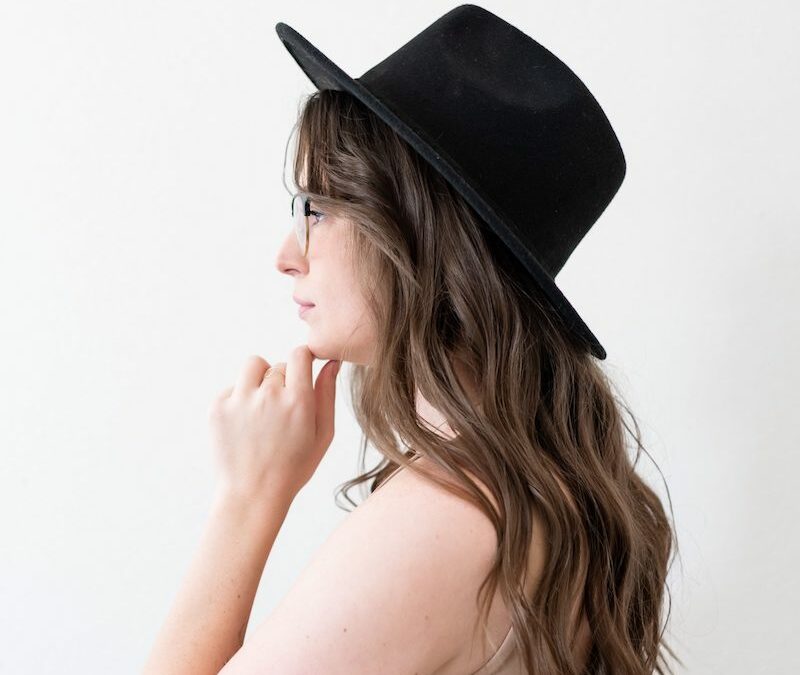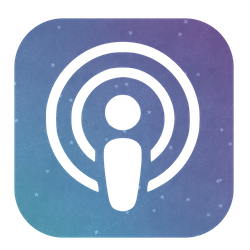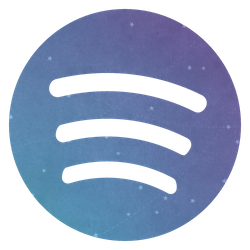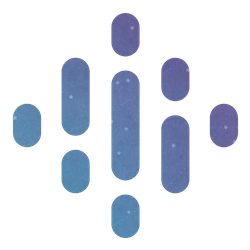episode 42
How Are You Spending Your Work Day as a Web Designer?
Today Sam & Karyn discuss time audits of your work day, centering your time on revenue-generating tasks and focusing on numbers that matter.
Episode 42: How Are You Spending Your Work Day as a Web Designer?
Show Notes:
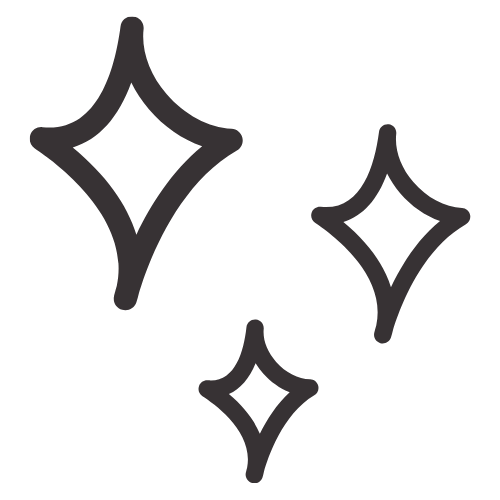



Episode Transcript:
Karyn Paige, Sam Munoz
Sam Munoz 00:00
Every now and then we’ll do time tracking. And we’ll see like, how are we really spending our hours? How much time are we actually working? And when we are working, what are we spending our time on. And that can be a really, really helpful way to just keep yourself accountable, honestly, because the conversation is around the tasks that you’re doing the different ways you’re spending time in your business. So if you know, you know, everyday I sit at my computer for five hours. How are you spending that time? What are you doing? And something that we talked about in the mentorship is different types of tasks, revenue generating tasks, indirectly revenue generating tests, and then there are some things that are kind of just busy work. And I feel like that’s really what this conversation is centering around, is, are we maybe gravitating towards the busy work sometimes? Welcome to Making website magic where we empower women to step boldly into their web design, businesses follow their intuition and claim the success they’re worthy of. I’m Sam Munoz.
Karyn Paige 01:04
And I’m Karen Page, where the Tech Wizards behind Sam Linnaeus consulting and the making website Magic School of Business. Were two women here to talk about what it actually takes to run a web design business that’s aligned with your vision.
Sam Munoz 01:17
Spoiler alert, it probably isn’t what you think it is ready to hear about everything from refining your business vision, networking with intention and creating a magical client experience.
Karyn Paige 01:27
Let’s do it.
Sam Munoz 01:33
Well, hello there, Karen.
Karyn Paige 01:36
Hey, Sam, how’s it going?
Sam Munoz 01:39
It’s going well, I am spending my day working, which is so fitting for today’s episode. And how are you doing over there?
Karyn Paige 01:48
I’m doing great. I’m also spending my day working.
Sam Munoz 01:51
Yeah, I woke up this morning and it was snowing. And it was a total shock to me. And I was like, huh, alright, noted. And now here we are. And I’m all cozied up recording this podcast with you. So there I love to like set the scene right peel back the curtain. What’s it looking like over there? In the places that people are recording the podcast? I think that’s super fun.
Karyn Paige 02:10
Yeah, you mean it’s not officially hot girl summer yet? What? Okay, better? costume change,
Sam Munoz 02:16
at least here in America? It is not.
Karyn Paige 02:18
Thank you. Yeah, global perspective. Appreciate that.
Sam Munoz 02:21
Absolutely. So speaking of our day, and what we’re doing today, today’s episode is how are you spending your workday as a web designer? That’s the more polite title that we had planned. Because you know what, what we also want to ask you is what are you even doing all day? And that’s a more provocative title, right? But this is going to be a good conversation, a little heart to heart a little like Big Sister chat about like, how are you spending your day? Is it helping you achieve your goals? And I think it’s going to be fun, we’re gonna have some like strategy and mindset and all that stuff. But we have like a kind of loose outline to keep this super conversational around this topic of like, what are you doing during your work day? And is that really helping you meet the goals that you have for your business?
Karyn Paige 03:07
Right? Okay. So this makes me think of when you’re maybe feeling frustrated, because you have a goal and you’re like, but I’m not getting there. Then it’s like, okay, well, what are you doing all day? And maybe we can reverse engineer this and see where there’s any like breakdowns or gaps?
Sam Munoz 03:23
Exactly, almost like an audit, like an audit of your day, you know, every now and then we’ll do time tracking. And we’ll see like, how are we really spending our hours? How much time are we actually working? And when we are working? What are we spending our time on. And that can be a really, really helpful way to just keep yourself accountable, honestly, because the conversation is around the tasks that you’re doing the different ways you’re spending time in your business. So if you know, you know, every day, I sit at my computer for five hours. How are you spending that time? What are you doing and something that we talked about in the mentorship is different types of tasks, revenue generating tasks, indirectly revenue generating tasks, and then there are some things that are kind of just busy work. And I feel like that’s really what this conversation is centering around, is, are we maybe gravitating towards the busy work sometimes?
Karyn Paige 04:17
Yeah, right. So okay, first of all, it’s like, being able to identify, maybe categorize what type of tasks fit into which area, and then asking the question of like, Why do some of those tasks feel more desirable or tempting than others?
Sam Munoz 04:35
Absolutely. So let’s take a minute then to kind of break down what we mean by like revenue generating indirectly revenue generating and like busy work. And I think that the best way to do this is through examples. The revenue generating tasks are honestly things that are going to help bring money into your business. Right. So this might be like getting on a discovery call or sending out a proposal, inviting a past client to a retainer opportunity right Those are gonna bring money into your business. And when we think about prioritizing tasks, I love prioritizing revenue generating tasks. Because just a reminder, we are running businesses. So that’s revenue generating task. Alright, so this is really funny because Karen and I just kind of pressed pause on the podcast before we moved over to identifying indirect revenue generating tasks and busy work and kind of like, Okay, which one fits into which bucket. And what we’re discovering is that there really is a fine line between the two, which is why we might find ourselves gravitating towards busy work, because we think it’s the thing that’s going to help us make money in the future. And so I think, let’s have like, let’s just take the conversation, we’re just having a pull it right into the podcast.
Karyn Paige 05:43
Okay, great. So the first thing that came to mind for me was like an indirect task is maybe something that’s like, a little bit more administrative, right? Setting up your dubsado, or your HoneyBook. So that, like, all your contacts, and stuff are in there. So when you do have a client, you can just boom, send them the thing, and you’re ready to go.
Sam Munoz 06:03
Definitely. But then that could easily kind of transform into busy work, if what we’re doing is like spending time tinkering those things and like, oh, wait, I didn’t write that exactly the way that I wanted to, or I want to like make this header pink instead of like this other pink. And then we’re spending like hours and hours perfecting something, versus creating something and then going out and doing the revenue generating tasks that’s going to actually allow you to make use of the thing that you just created. So that I think that that’s kind of where busywork comes in is where it’s like, there is no clear objective. And because of that, it like sucks up all the time. Because it’s just like, you can just like tweak and tweak and tweak like your website, just like maybe I’ll use this font instead of this font and like, let me spend like five hours like choosing between these two pink colors. I think we talked about that in the Coming Soon page episode. And then all of a sudden time is gone. And did we do anything today? I don’t know.
Karyn Paige 07:01
Yeah. Or like another example of like, how do I decide if something is indirect versus moneymaking is like sending a networking call invitation, right? So maybe you’re inviting, like a brand photographer to get on a call with you, right? Like that, in essence, kind of feels direct. But that brand photographer might not be your client. So that’s what makes it indirect, right? Like, yes, you could be making this great connection that could lead to like your referral network and cultivating your network for the future. But it’s not as direct as sending an invitation to talk to someone who could pay you money.
Sam Munoz 07:33
Totally. And then if we’re like, again, swinging on, like the busy work end of that thing, it’s like maybe instead of actually reaching out to that person to make a networking call, you’re spending two hours making a list of 500 people that you could reach out to, when what you really could be doing is making a list of five people and reaching out to those five people. And I think what is kind of, you know, with all of those examples and stuff is, the thing about the busy work is that it is the stuff that is safe and private and doesn’t involve you taking like an actual action step. Because even the indirect stuff like those tasks are so important because they’re planting seeds for the future. But sitting in my office and making a list of people I want to reach out to and then never planning to do that, or making a content calendar for myself of all this content that I can create. And like spending 10 hours making it and never really taking action to book a discovery call with someone or go out and say, Hey, I’m a web designer, you know what I mean? Like that stuff is safe and comfortable. And the truth is the reason it safe is because we can’t be rejected. We no one can tell us No, when we do those kinds of things. And I think we need to spend some time talking about that.
Karyn Paige 08:50
Yeah, this feeling of safety. Like when I do this, I feel safe. So let’s keep doing that. When I do this, I don’t feel safe. Because there’s potential for rejection.
Sam Munoz 09:04
Absolutely. It’s making me think of episode 10 The value of vulnerability as a web designer, because so much of what we do is putting ourselves out there, right? Getting feedback from a client, making an invitation for a discovery call, making an invitation to network with someone and there is a possibility with those kinds of tasks sending a proposal that we can get a no we can have someone reject us, we can have you know that that sting of like, I tried something and it didn’t work, but the truth is that you can try something and it might not work, but you could try something and it could work. But if you never try anything, then it’s definitely never going to work. Does that make sense? It’s just It’s just math.
Karyn Paige 09:46
Okay, so this idea of like safety and protecting yourself from being rejected from something that’s really direct, it really does often make me think about like content creation and working on our own digital universes. And this idea of like the perfectionism, and we’ve, this is a theme on our show is the theme on our show, because it’s a theme with the women that we talked to. And so I just want to kind of hold space for that and really continue the conversation that we’ve had previously around things like marketing and social media, and going in these directions where we’re like, we really genuinely believe that these are money generating tasks. And you get to a point where you’re like, well, maybe it didn’t generate money for me today. But if I keep doing it, it will come eventually. And that I’m just like, exhaling on this because I’m like, speaking from personal experience here, ladies, where it’s not, might not pan out the way you think it’s gonna pan out.
Sam Munoz 10:50
Yeah. And to like, be really specific, something like an email list, for example, where we hear a lot like grow an email list, grow an email list to make money. And we’ve talked about this on previous episodes of the podcast, like that type of model may not work well, for web designers, a because it is a long game, be because the people that are opting in for email lists are often not people that are looking for someone to hire, they’re looking for DIY, teach me how to do the thing. And because of that, if let’s say you’ve invested like $1,000, in a course, to learn how to build an email list, you’re probably going to want to spend some time there, building the email list, right? And because of that, you are not booking clients, you’re not doing things that are directly generating money for you. So you kind of go in this like spiral of frustration, let me keep trying to do this, I must be doing something wrong, I must have to tweak the funnel, maybe I need to put some paid ads towards this. And then it is that like spiraling. And the thing about this whole conversation that we’re having today is, you don’t feel good. At the end of a day filled with that kind of work. Maybe you think I put in my five hours of work today. But there might not be like a booked project to show for it or like a new client on your discovery call calendar. And those are this is making me think of like, what are the numbers that matter? We have like a spreadsheet in the mentorship where we call it numbers that matter? Because it’s like, what are the parts of your business that are actually important to like, track and keep up on and spend your time and energy on and that is so connected to the revenue generating tasks, right? Because if we’re tracking things like social likes, and stuff like that, that’s great. But what is it looking like in your bank account? And how are those things like translating? And how is your time invested in your business connected to how much money you’re making in your business and how many clients you’re booking? And all of those things that are really, those are like the key performance indicators of a successful web design and development business?
Karyn Paige 12:55
Yeah, I want to also think about like harkening back to the episode that we did about the seasons of your business, right? And I’m thinking about, gosh, I just, I just want to say this thing, because it’s like, this is a personal example. Okay. When I first started my business, first of all, I listened to really poor business advice about what I should be doing, I wish, what I had heard was, okay, you want to have a web design business, great, create something, some, just something to show, and then go out and start talking to people and tell them that you can build them something that they need, or you can design something that they need, boom, that’s it. That’s all I gotta do. Right? What I ended up doing was spiraling down, creating blog posts, and then scheduling them on tailwind so that they can be found on Pinterest, and then using stock photography to create social posts with like quotes and like celebrating, you know, international Donut Day, and like crap like that, right? And I would literally sit and be like, I feel like I did something today because I batched out 30 days worth of Instagram posts and captions today, right? Like, that felt really valid. And I was like, You know what, I was told that I just got to keep creating this content for 90 days. Go on to what is it ask the public access to people and find like questions to create blog posts about and like all of this stuff. And that felt so much safer than just introducing myself to anyone in real life or on the internet and being like, this is what I do. Can I talk to you about this? Can I you know, let you know, I’m here bah bah, bah, bah, bah. Right. And so I share that story but I don’t think what I shared recently is like what ended up happening was that carried over into like my business because then I had to research what’s the best payment gateway to receive automated payments for my email list offer which was let me like maintain your site stranger whom I’ve never met that I’m assuming I’m going to win you over. From the thing that I scheduled on Pinterest, right? So it was this other thing of like, well, I think I’m doing work because I’m setting up my business foundations, I need to know if stripe is better than wave or like, you know, PayPal and like, How can I integrate that and blah, blah, blah, blah, blah. And these all felt like very rational decisions I was making in my business. And then nowhere in there was I like booking clients or anything like that. I was like preparing, preparing, preparing, you know, like, if you stay ready, you don’t have to get ready. Bla bla bla bla bla, but here’s the thing. Here’s the thing. Have you ever looked at anyone else’s business? Do you know how there’s this fine line between busy work and just doing the thing? The money could be right there and someone’s like, I’m trying to pay you and then you could be like, Okay, let me figure out the best way to like, collect payment.
Sam Munoz 15:55
Yes. Oh, right. Yeah.
Karyn Paige 15:57
So that was a very long winded thing. But I just felt like I needed to say the thing that needed to be said, because it is okay to let go of some of these things of perfection. Like, I need to have this solid foundation ready. So when someone picks me, boom, all systems go, it is okay.
16:16
To build that out why? Oh,
Karyn Paige 16:19
yeah, build the planewave. Like, figure it out? Well, you go. And also, I didn’t have anybody to talk to you about this. And no one to bounce these ideas off of. I didn’t have anyone to be like, Hey, um, what’s the simplest way to just like get paid? Yeah. Right. So I could have saved myself so much time and frustration if I’d been in community, and just felt safe to like, ask questions instead of feeling like I needed to figure it all out on my own.
Sam Munoz 16:47
Totally. Thank you for sharing all of that. I think that the listeners can probably relate to that, even if it’s not now it was before? Or if if they’re in a season of business right now, where they’re like, Yep, I’m doing all of those things. And no, I don’t have a booked client on my roster. And I would like that. And I think that this is an important thing that you mentioned here about the community, and also like the unawareness, maybe of what to do. And we talked about this in that episode on the seasons of business where like, the way that Karen and I coach, the way that we approach the podcast, everything is not ever about what you should do it is here are some options, choose the one that feels the best for you. Here are things that have worked there tried and true. Also, there’s other options out there, too, you get to decide, but here’s some things that you could try. And all of the things that we share that you could try are things designed for this kind of business, because that’s like, the overarching theme is just an awareness of like, what you’re trying to do. That’s why having like a goal, like whether it be like financial goal, etc, like having that, and then also understanding how to like how to get there, you know, the reverse engineering thing. So you you might be listening to this saying like, that sounds great. But I actually don’t know what the tasks are, that I should be spending time on. That’s what we were saying in the beginning about those revenue generating tasks, the things like sending proposals, booking discovery calls, going to networking events, telling people that you’re a web designer going and meeting new potential clients like those actions, I refer to atomic habits a lot, that book, I think it’s a great book. And something in there is like that. Those are the things that we can control. And all the other things are just outcomes. And so for stacking the deck in our favor with all of those like revenue generating things, the revenue will come. But if we’re stacking the deck in our favor of like, more email subscribers for a business model that doesn’t even align with what we’re trying to do, then we’re not really aligning the arrow in the direction of our goals. We’re like aligning our arrow and like the opposite direction, or a parallel one or something. So I think that’s important too, is like you might not actually know what to spend your time on. And so that’s where things like the mentorship or like the podcasts come in to say, hey, oh, by the way, you actually can make this so freakin simple. And you could just go out and talk to people.
Karyn Paige 19:03
One of my favorite questions to ask inside the mentorship is like when we have these conversations about like the Quds right, the things you could be doing. My favorite question to ask is, did anybody know that this was an option?
Sam Munoz 19:18
You do is that I love that. Because
Karyn Paige 19:21
we don’t want to operate off of assumptions that everybody just knows this information, right? And so it’s a delight, because it’s almost like my spidey sense goes off. And like Sam just said something. Sam just dropped a dope idea. Let me ask, did he really know that you could do that? Because the responses are often like, yeah, I didn’t know that was the thing. I didn’t know that I could do that. I didn’t know that was an option.
Sam Munoz 19:46
Right, right. You know, I just want to for some reason, this is just coming up for me right now. I just want to thank everyone for listening to this podcast and putting your I guess your trust in your in what Karen and I are saying because we designed this podcast not for any business owner, we design this podcast for women, web designers and developers. And you know, other people fit into that category brand designers, copywriters, etc. People that kind of focus on the website and branding stuff, for a very specific reason, because the things that we’re sharing really are specific to this type of business model. And that’s why we feel very compelled to say, hey, just as a reminder, like, you don’t have to do this stuff, because it’s not really connected to what you’re doing. Like, you don’t have to go sell a t shirt that has your logo on it, because that doesn’t really connect to selling websites or selling brands or writing someone’s copy, like those things don’t align. And so I think that I’m really excited that we have this podcast as like a place to remind people that like, Hey, you’re running a very specific type of business. And there’s like specific things that you could do again, like there might be five choices, but you get to decide what those things are. But like, one of those choices doesn’t have to be the thing that everybody else is doing in a business model that’s totally different than yours. So, in the spirit of what are you doing all day, and how are you spending your workday as a web designer? I hope that this episode really, again, kind of serves as an audit of like, let me take a pause, like, how am I spending my day? And are those things like are all of those little actions moving me in the direction that I want to go? Are they moving me further away? Are they just like distracting me? Where are the arrows of those individual tasks of lining up? I’m an engineer so like, this is how my brain works. And if I added up all of those arrows if I added up all of those vectors, are we moving in the right direction? Or are we moving away from our goals and dreams?
Karyn Paige 21:42
Yeah, okay, I’m just gonna do a straight up like Avengers after the credits like secret same type of thing right now and add this Did you know that you can work less hours in a day than you think? Because if you focused on more direct money making tasks you could probably work like three to four hours a day tops and are you okay with that?
Sam Munoz 22:15
That is a great credits ending and I also want to say that is making me think we need an episode around that so haha. There’s always a sequel. Exactly.
A Season of New Beginnings
Today Sam & Karyn make the bittersweet announcement to end the podcast as they step into a new season of life and business. They share what is to come for them, how you can stay connected to the Making Website Community and encourage you to be open to new opportunities, too.
Season 02 in Review
Today Sam & Karyn look back on season 02 of the podcast, celebrating successes in the mentorship, launching our free community, the future of the podcast and Making Website Magic at large.
People-Pleasing as a Web Designer & Developer
Today Sam & Karyn discuss people-pleasing, understanding that your business has needs and how to honor them in your client relationships.

